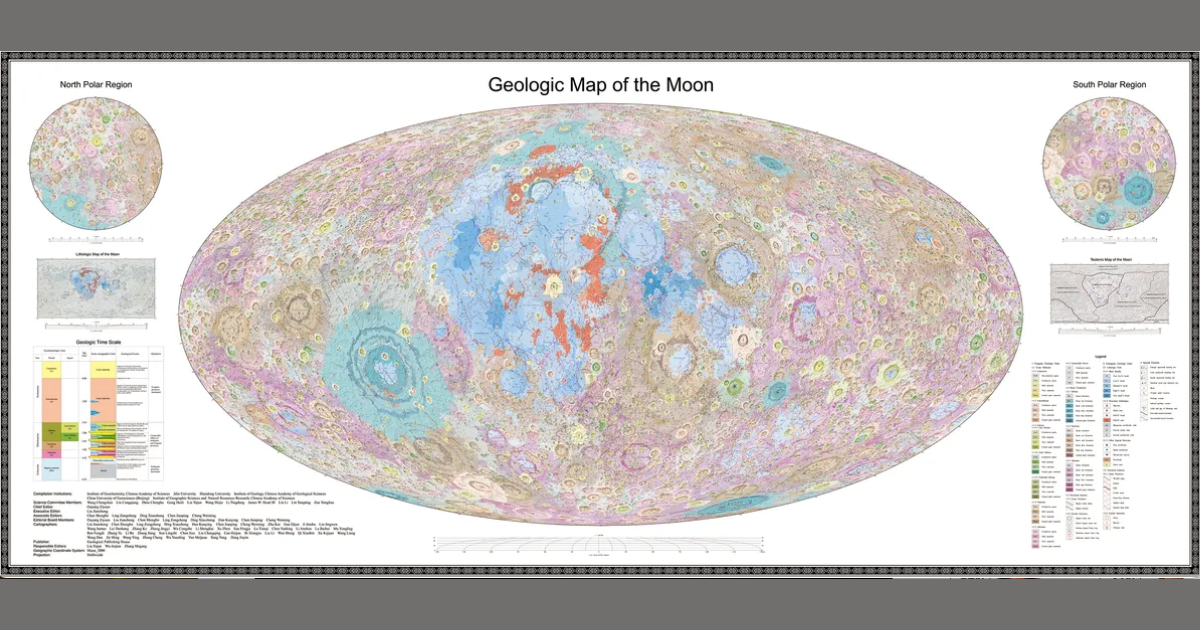
It might seem as if NASA and other space agencies have been hyper-focused on Mars lately, but if you’ve been paying attention, you’ve probably noticed a lot is going on up on the Moon, too.
We’re learning more every day, with landers returning from the farthest reaches loaded with data.
Now, that data has resulted in a high-definition atlas of our moon.
Chinese astronomers recently released the atlas, calling it the “first high-definition geological atlas of the whole Moon.”
It provides images of craters we already know and love, but also offers Geologic, Lithologic, and Tectonic maps of the entire surface.
Nations are racing to outdo each other in the race to not only learn more about the Moon, but to be the next agency to put people on it, too.
Years of lunar orbiters have returned enough data for China to compile a wealth of new information.
Liu Jianzhong, the editor-in-chief of the atlas, says we really needed this update.
“With the accumulation of data and research results, these lunar geological maps may no longer meet future scientific research and lunar exploration needs.”
Liu has overseen the production of geologic Moon maps of the entire lunar surface for visualizing, as well as 30 quadrangles of the Moon.
The Moon doesn’t have active plate tectonics that move against each other the way they do on Earth, but Liu and his colleagues say it does have “tectonic units” from its earliest days.
The Tectonic Map pinpoints their locations, as well as an explanation of the classification system for lunar structures.
The Lithographic map color-codes different types of rock, and the Geologic Map shows craters, their composition, and when they were formed.
The team also presented a new timeline for the Moon, breaking it’s geologic history into three eons and six periods.
They argue their timeline emphasizes the importance of the shift from Moon’s beginnings, when changes were driven from the interior, to the later periods when changes were forced by external influences.
They marked 12,341 impact craters, 82 impact basins, 17 types of rocks, and 14 types of structures, and also classified basins based on how they were formed.
They’ve also included markers of the new era, which some are calling the Moon’s Anthropocene.
The creators believe the atlas will be a tool for future “lunar scientific research…landing site selection, lunar resource exploration and trajectory planning for China’s future lunar exploration projects.”
Always looking ahead, aren’t they?
If you have a love for the Moon or know someone who does, though, you won’t be able to order a copy from Amazon anytime soon.
Or at all, unless you’ve got an extra $1500 lying around.
If you thought that was interesting, you might like to read a story that reveals Earth’s priciest precious metal isn’t gold or platinum and costs over $10,000 an ounce!